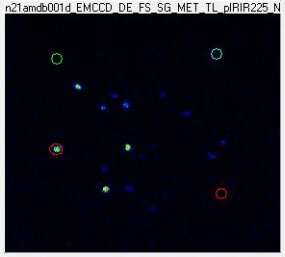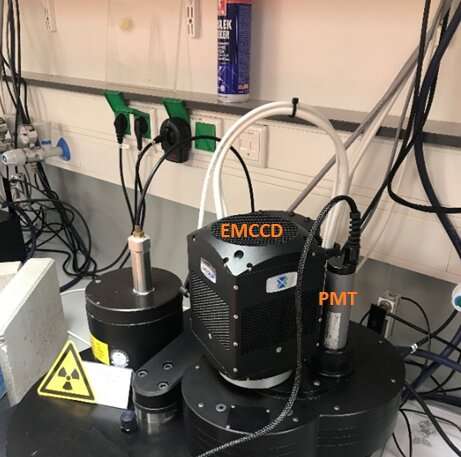Light reveals the origin of a grain of sand

A grain of sand buried for an extended period of time in earthworks or on the bottom of the ocean, accumulate a luminescence signal. Scientists use this signal to determine how long a particular grain of sand has been buried. With a new, highly sensitive camera, they can photograph these signals with pinpoint accuracy. In fact, they are even trying to determine where the grain of sand comes from and how it has spread across the ocean floor.
A buried grain of sand builds up a luminescence signal due to the presence of a low dose of naturally occurring radioactive radiation. When light from the outside hits the grain of sand, the luminescence signal is released. This is why it is very important that no light reaches the sample before it can be examined at Netherlands Center for Luminescence dating (NCL).
Darkroom for grains of sand from the Wadden Sea
This laboratory somewhat resembles a darkroom. However, instead of processing photos, scientists are analyzing grains of sand. In the laboratory, the buried grain of sand is exposed to light for the first time. That is when the luminescence signal is released. By measuring the amount of light released, scientists can estimate when the grain of sand was buried.
This provides information about the age of an earthwork, but Ph.D. student Anna-Maartje de Boer uses this technique to learn more about the distribution of sand replenishment in the Wadden Sea. "In 2018, 5 million cubic meters of sand were delivered to the tidal delta between the Wadden Islands of Terschelling and Ameland as part of a larger sand replenishment program to protect the coastline. We use luminescence techniques in conjunction with models to map the distribution of the replenishment and understand its physical and ecological effects on the coastal ecosystem. We are working together with Delft University of Technology and NIOZ on this."

Highly sensitive camera
Together with the research team TRAILS, De Boer took sediment samples at various locations in the Wadden Sea. Back at the laboratory, a highly sensitive camera takes pictures of the photons (light particles) that a grain of sand emits when exposed to light under controlled conditions. The luminescence signals of replenishment sand and local sand from the Wadden Sea are compared and should differ, as the grains of sand carry a different sedimentation history. The identification of replenishment grains in a chunk of sand from the Wadden Sea is the basis for luminescence tracing.
The camera used for analyzing grains of sand was purchased especially for this project. The conventional method stimulates grain by grain and measures with a PMT (Photon Multiplier Tube), counting the number of photons (light particles) released, while the camera creates images of the light emitted by up to 100 grains of sand per measuring disk. Software analyzes these images and obtains a specific value from them. This enables scientists to more quickly and accurately determine when a grain of sand was last exposed to light and especially which population it comes from.
Tracing the sand replenishment is therefore not the only target of this project. "We are constantly working to further develop the method and techniques behind luminescence. The new camera also gives us the opportunity to study thermoluminescence signals per grain of sand; this luminescence signal is not reset by light, but by temperature."
Provided by Wageningen University




















